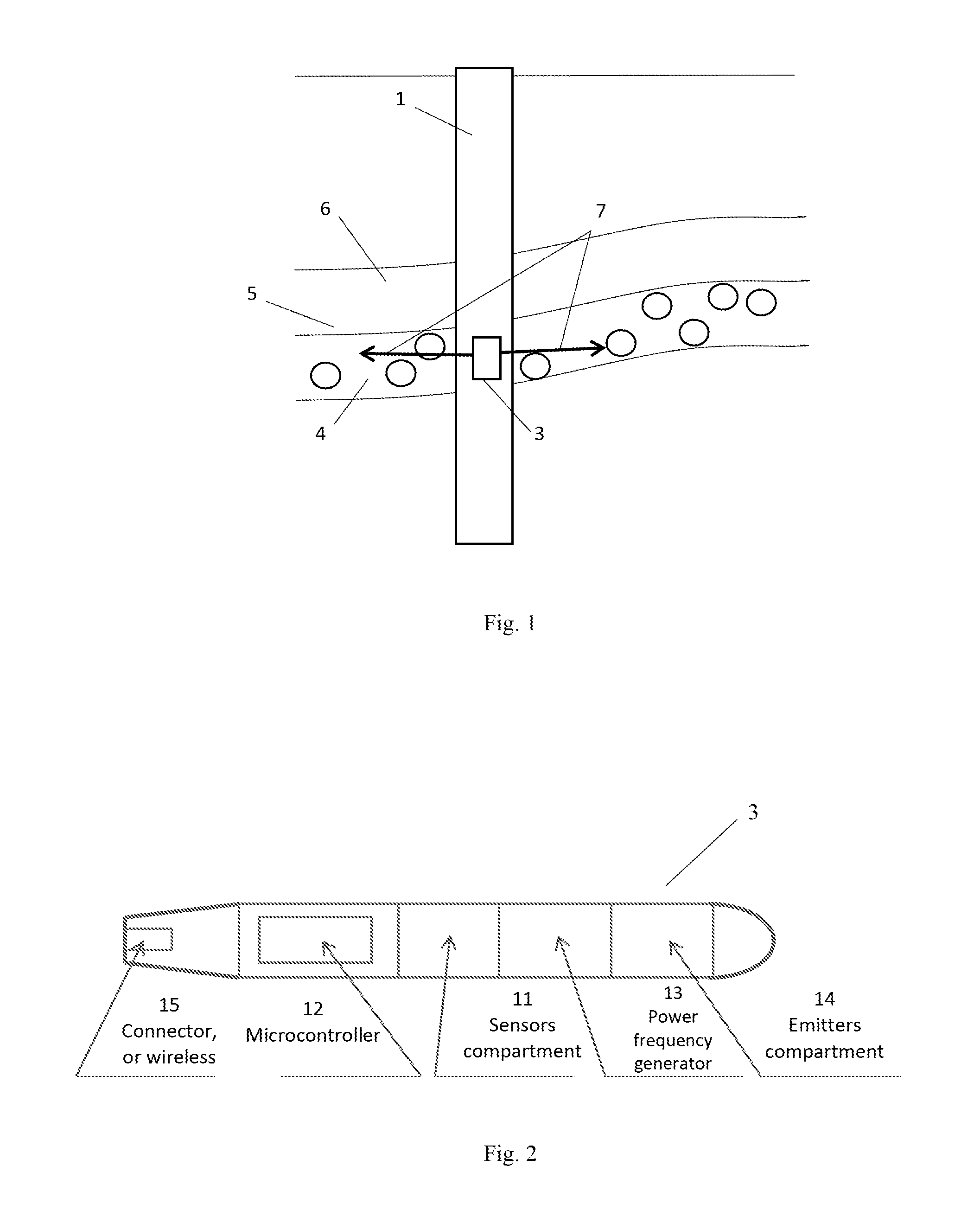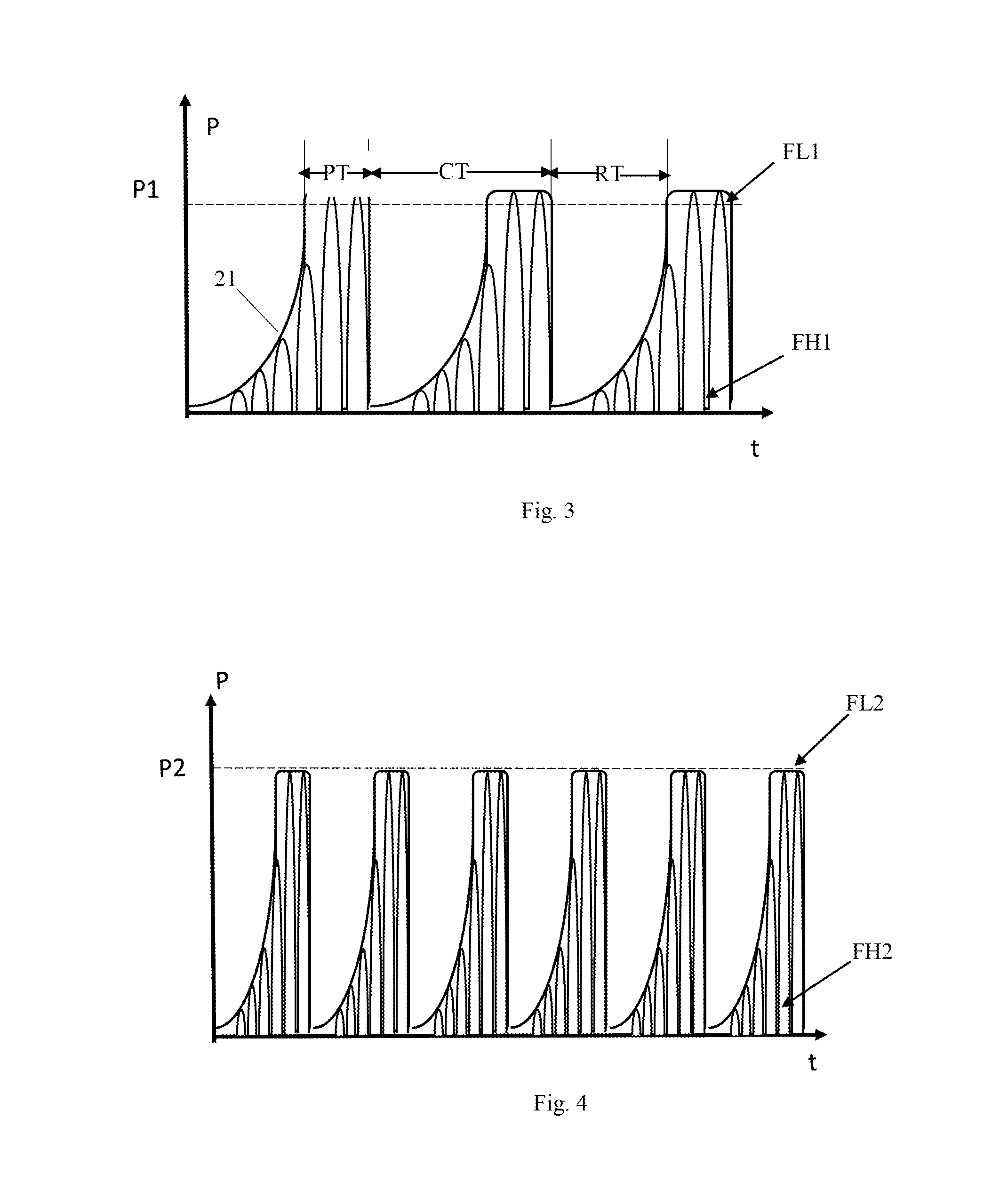Pulsed acoustic impact for facilitation of oil and gas extracting
a technology of acoustic impact and oil and gas extraction, which is applied in the field of oil and gas industry, can solve the problems of unnecessarily high reagent loss and increased cost, high overall cost, and increased environmental risks
- Summary
- Abstract
- Description
- Claims
- Application Information
AI Technical Summary
Benefits of technology
Problems solved by technology
Method used
Image
Examples
Embodiment Construction
[0026]The claimed method comprises emitting complex acoustic vibrations on the perforated zones of a well, at specific interlayers of a well, and / or on the filters in horizontal wells. The perforated interval and productive strata of the reservoir are thus sequentially and specifically treated with a directed acoustic field. The pressure, time, and range of the acoustics are correlated and applied in various combinations depending on detected characteristics of the specific well and the formation within the well. Signals in the audible and ultrasound ranges, with 360 degree directional characteristics (i.e. in all directions), provide acoustic pressures from a minimum value, necessary to cause changes in an active production well, to a maximum value, which is limited by the elasticity and other characteristics of the formation. The duration of the exposure is based on the effective exposure time, which also depends on characteristics of the individual well and the formation within i...
PUM
 Login to View More
Login to View More Abstract
Description
Claims
Application Information
 Login to View More
Login to View More - R&D
- Intellectual Property
- Life Sciences
- Materials
- Tech Scout
- Unparalleled Data Quality
- Higher Quality Content
- 60% Fewer Hallucinations
Browse by: Latest US Patents, China's latest patents, Technical Efficacy Thesaurus, Application Domain, Technology Topic, Popular Technical Reports.
© 2025 PatSnap. All rights reserved.Legal|Privacy policy|Modern Slavery Act Transparency Statement|Sitemap|About US| Contact US: help@patsnap.com



